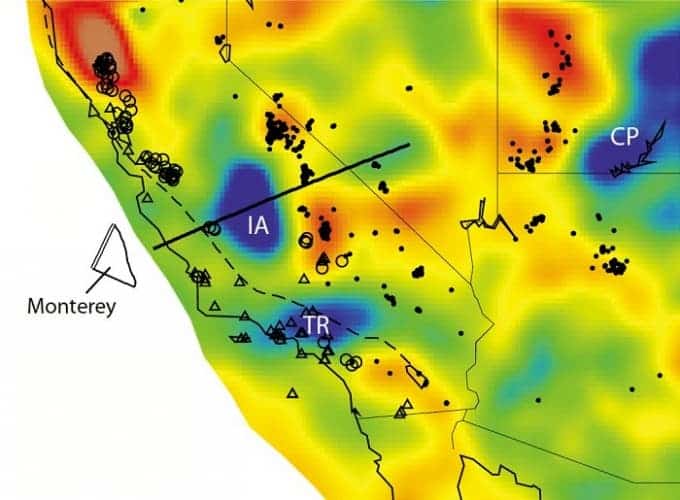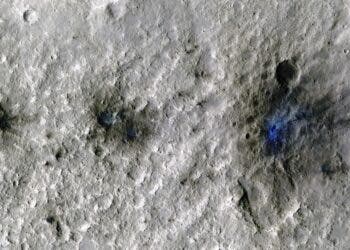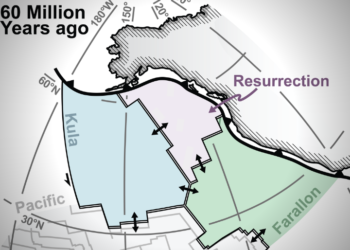
Millions of years ago, an ancient tectonic plate called the Farallon oceanic plate used to sit between the Pacific and North American plates. In time, the plate “disappeared” beneath the North American one, however geologists at Brown University have now found physical surface remnants of the plate under sections of central California and Mexico. The Farallon surface fragments may now explain a seismic anomaly in the region that has eluded scientists for some time.
Though they used to be spaced apart by the Farallon plate, currently the North American and Pacific tectonic plates are joined through a continental transform fault known as the San Andreas fault. In the process the Farallon plate was forced underneath the North American one through subduction, leaving a few small remnants at the surface that became part of the Pacific plate.
Research carried out by Brown University geologists has revealed however that bits of the Farallon plate have remained attached at the surface. Surprisingly part of Mexico’s Baja region as well as a considerable landmass in central California rest upon slabs of this ancient plate.
Oddly enough, close to the region a seismic anomaly has been registered in the Sierra Nevada mountains in the Golden State. Dubbed the Isabella anomaly, it suggests that a sizable mass of relatively cool and dehydrated material is present at a depth of 100 to kilometers below the Earth’s surface. This was found after many years ago geologists mapped out the region many miles beneath the earth’s surface by transforming seismic waves that can be fast or slow into actual images. These seismic waves travel at velocities varying according to the materials they encounter.
For some time, geologists have been trying to explain this peculiarity and many theories have been proposed to justify it, like delamination – the breaking of the lithospheric plate under the mountains. High-magnesium andesite deposits on the surface near the eastern edge of the anomaly found by the Brown researchers, often linked to the melting of the oceanic crust, provided evidence, however, that in fact the Farallon plate broke off and melted into the mantle.
This evidence convinced Brown geophysicist Donald Forsyth and his collaborators that the Isabella anomaly might also be part of a slab connected to an unsubducted fragment of the Farallon plate. The findings, published in the journal Proceedings of the National Academy of Sciences, might warrant a new investigation into the ancient plate tectonics of western North America, especially considering the region is extremely seismically active.
“The geometry was the kicker,” Forsyth said. “The way they line up just makes sense.”
“However the Sierra Nevada was delaminated,” Forsyth said, “it’s probably not in the way that many people had been thinking.”






